The results from the original clover study at Clonakilty have been well documented. The trial ran from 2014 to 2017 and the treatment with grass and clover grew an extra tonne of grass per hectare and the cows produced an extra 48kg of milk solids, on average, over the four years. The study was a shot in the arm for farmers and researchers who may have been complacent about what the power of clover.
However, the results above are averaged over the four years of the study. Brian McCarthy is the research officer in charge of the project and he says that the power of clover is all to do with the percentage of clover in the sward. If the percentage of clover is low, the benefits of clover will be less. In Clonakilty, the percentage of clover in the swards went from 37.1% in 2014 to 15.2% in 2017.
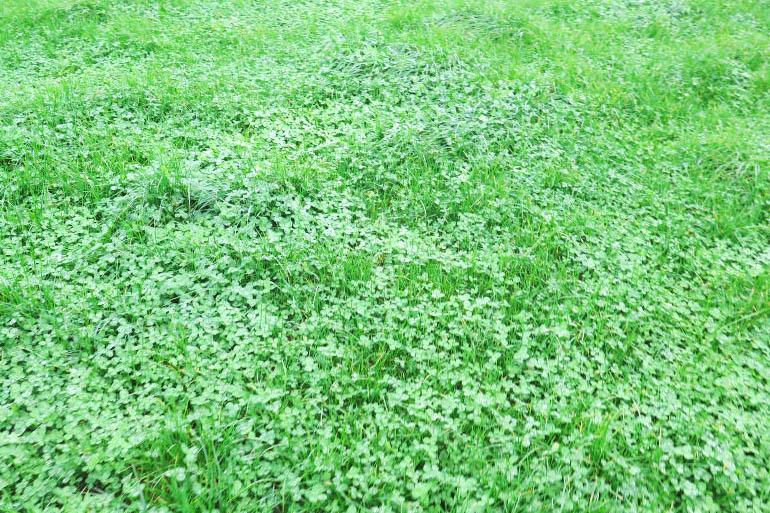
A paddock with 40% clover in Clonakilty.
The benefit in terms of pasture growth and milk solids yield declined in line with the decline in clover percentage. There was a 2.5t/ha difference in growth between grass only and grass and clover swards in 2014, while it was only 0.4t/ha in 2017. The reduction in the difference in milk yield was similar to the reduction in the difference in grass growth.
So what has happened since? The Irish Farmers Journal visited Clonakilty this week to get an update on the clover experiment. The percentage of clover in the swards declined further in 2018 to 10% and the researchers expect it to average at around 12% for 2019. Effectively, the percentage of clover has crashed from the peak of 37% in 2014 to 12%, five years later in 2019. This corresponds with previous farmer research and experience that clover doesn’t persist well.
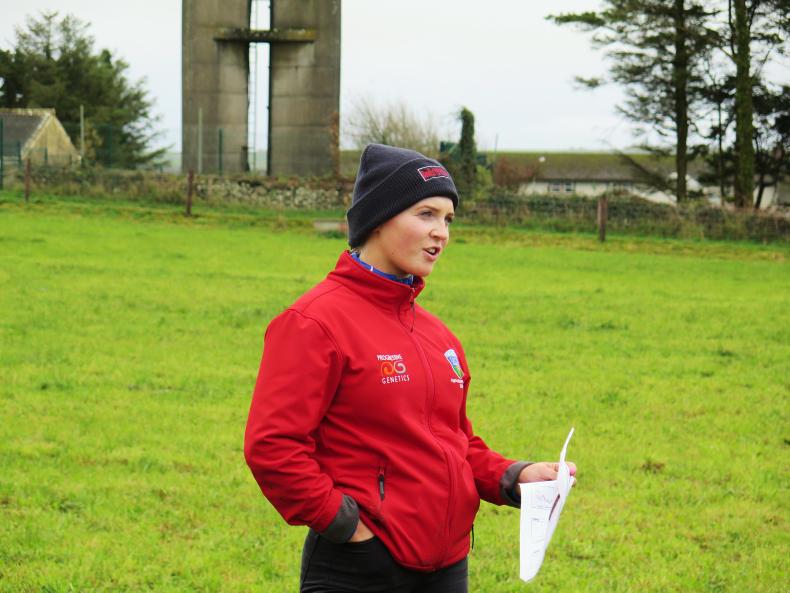
Aine Murray is doing her PhD on clover in Clonakilty.
Aine Murray is a PhD student working on a new trial at Clonakilty. Part of her role is to look back at the previous experiment and try to identify if there is any pattern as to why clover didn’t persist. Clover has all but disappeared on about 30% of the farm that had good levels of clover previously.
“At this stage, the only thing we can say with any certainty is that carrying high clover covers over the winter is bad. It won’t survive the winter so you’ll lose the pasture cover and the clover will probably die. We no longer carry over covers with a high clover content. Instead, we wait and graze them last so there is a low cover over the winter and we have nothing left to lose. But even avoiding this we still lose clover in swards, so Aine’s study will look back and try to identify patterns,” Brian says.
The best way of getting clover in is to include it in a reseed but this is costly and the field is out of production for a long time
For clover to have a positive effect, he says that the sward needs to be at around 25% to 30% on average. This will range from 5% to 10% in spring, 20% to 25% mid-season and 35% to 40% in autumn in order to get the 25% to 30% average across the year. So at around 12% in 2019, the Clonakilty farm is now sub-optimal for clover content.
New experiment
The new experiment is looking at grass only and grass and clover swards under two different nitrogen fertiliser regimes. In the previous study, both treatments received 250kgN/ha annually, but in the new study one treatment is going to get 150kgN/ha, while the other is going to get 250kgN/ha. These rates are being replicated across the grass-only and grass and clover swards, so there are four treatments in total.
To increase the clover content in the grass and clover swards, farm manager Fergal Coughlan is doing a combination of full reseeds and oversowing.
“The best way of getting clover in is to include it in a reseed but this is costly and the field is out of production for a long time. Oversowing has been hit and miss. You need to do small bits at a time. We spread 2kg/acre of clover seed along with 0:10:20 fertiliser and then spread watery slurry afterwards. The trick is to make sure you graze the field at a light cover for the next few rotations. You don’t want to be going into covers above 1,000kg/ha,” Fergal says.
The differences in the high and low nitrogen levels are already becoming apparent. Most of the difference in growth is happening in the latter half of the year as fertiliser application rates are similar until May. After May, the nitrogen rate for the 150kgN/ha treatment is about half that of the 250kgN/ha treatment.
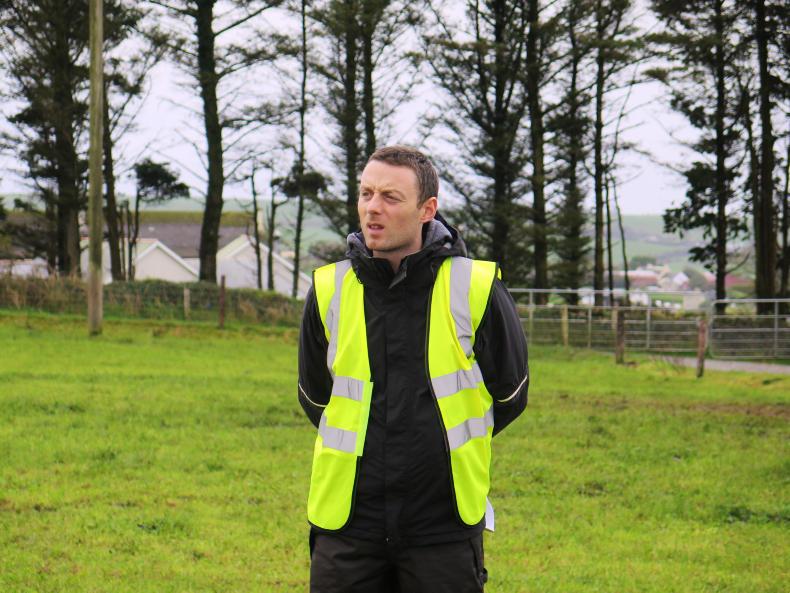
Brian McCarthy, research officer in charge of the clover experiments at Clonakilty.
Aine says that clover was slow to kick in this year and it wasn’t until September that clover content started to rise. Clover content is highest in the 150kgN/ha treatment at 13.3% on average so far this year, while it is 10.1% for the 250kgN/ha treatment. Both are below target levels.
The grass only treatment at 150kgN/ha is very noticeable. The sward is yellow and hungry-looking. There is no clover here to add nitrogen so the only source of nitrogen for the grass plant is what is spread by Fergal in terms of chemical fertiliser and slurry and the background nitrogen that is already in the soil.
Results
The results to date show that grass growth is similar across the two clover and the grass-only 250kgN/ha treatments. The average grass growth so far this year across these three treatments is 14.2t/ha. The grass-only 150kgN/ha treatment is back over 1t/ha at 13.1t/ha so far this year.
In terms of milk solids production, the cows on the grass-only treatments have produced 418kg and 427kgMS/cow so far this year for the low and high nitrogen rates, respectively. The cows on the grass and clover treatments have produced 431kg and 440kgMS/cow for the low and high nitrogen rates, respectively. Both the grass and milk solids production figures are preliminary results so you can’t really draw any final conclusions.
It reflects poorly on the farming sector that we are really only learning how to correctly manage clover now, despite it being around in St Patrick’s time in the fifth century. Getting clover in the sward at an average of 25% to 30% and spreading less nitrogen is a no-brainer. Animal performance improves, costs decrease and so too does the carbon footprint.
The challenge is to maintain clover in the sward and to have sufficient pasture at the shoulders of the year to allow extended grazing and to maintain a simple system. There’s work to be done on this. In terms of the environment, the benefit is in reduced carbon emissions due to less chemical nitrogen being spread.
The message from Clonakilty is to get clover into your swards now. Plan for oversowing next April. Pick one or two paddocks and manage them correctly vis-à-vis subsequent grazings at light covers. Only use clover-safe sprays on reseeds. For some, nitrogen is an addiction. The weaning process should start now.
Read more
Dairy Management: milk recording, slurry and inflation
Leasing land: the key considerations
The results from the original clover study at Clonakilty have been well documented. The trial ran from 2014 to 2017 and the treatment with grass and clover grew an extra tonne of grass per hectare and the cows produced an extra 48kg of milk solids, on average, over the four years. The study was a shot in the arm for farmers and researchers who may have been complacent about what the power of clover.
However, the results above are averaged over the four years of the study. Brian McCarthy is the research officer in charge of the project and he says that the power of clover is all to do with the percentage of clover in the sward. If the percentage of clover is low, the benefits of clover will be less. In Clonakilty, the percentage of clover in the swards went from 37.1% in 2014 to 15.2% in 2017.

A paddock with 40% clover in Clonakilty.
The benefit in terms of pasture growth and milk solids yield declined in line with the decline in clover percentage. There was a 2.5t/ha difference in growth between grass only and grass and clover swards in 2014, while it was only 0.4t/ha in 2017. The reduction in the difference in milk yield was similar to the reduction in the difference in grass growth.
So what has happened since? The Irish Farmers Journal visited Clonakilty this week to get an update on the clover experiment. The percentage of clover in the swards declined further in 2018 to 10% and the researchers expect it to average at around 12% for 2019. Effectively, the percentage of clover has crashed from the peak of 37% in 2014 to 12%, five years later in 2019. This corresponds with previous farmer research and experience that clover doesn’t persist well.

Aine Murray is doing her PhD on clover in Clonakilty.
Aine Murray is a PhD student working on a new trial at Clonakilty. Part of her role is to look back at the previous experiment and try to identify if there is any pattern as to why clover didn’t persist. Clover has all but disappeared on about 30% of the farm that had good levels of clover previously.
“At this stage, the only thing we can say with any certainty is that carrying high clover covers over the winter is bad. It won’t survive the winter so you’ll lose the pasture cover and the clover will probably die. We no longer carry over covers with a high clover content. Instead, we wait and graze them last so there is a low cover over the winter and we have nothing left to lose. But even avoiding this we still lose clover in swards, so Aine’s study will look back and try to identify patterns,” Brian says.
The best way of getting clover in is to include it in a reseed but this is costly and the field is out of production for a long time
For clover to have a positive effect, he says that the sward needs to be at around 25% to 30% on average. This will range from 5% to 10% in spring, 20% to 25% mid-season and 35% to 40% in autumn in order to get the 25% to 30% average across the year. So at around 12% in 2019, the Clonakilty farm is now sub-optimal for clover content.
New experiment
The new experiment is looking at grass only and grass and clover swards under two different nitrogen fertiliser regimes. In the previous study, both treatments received 250kgN/ha annually, but in the new study one treatment is going to get 150kgN/ha, while the other is going to get 250kgN/ha. These rates are being replicated across the grass-only and grass and clover swards, so there are four treatments in total.
To increase the clover content in the grass and clover swards, farm manager Fergal Coughlan is doing a combination of full reseeds and oversowing.
“The best way of getting clover in is to include it in a reseed but this is costly and the field is out of production for a long time. Oversowing has been hit and miss. You need to do small bits at a time. We spread 2kg/acre of clover seed along with 0:10:20 fertiliser and then spread watery slurry afterwards. The trick is to make sure you graze the field at a light cover for the next few rotations. You don’t want to be going into covers above 1,000kg/ha,” Fergal says.
The differences in the high and low nitrogen levels are already becoming apparent. Most of the difference in growth is happening in the latter half of the year as fertiliser application rates are similar until May. After May, the nitrogen rate for the 150kgN/ha treatment is about half that of the 250kgN/ha treatment.

Brian McCarthy, research officer in charge of the clover experiments at Clonakilty.
Aine says that clover was slow to kick in this year and it wasn’t until September that clover content started to rise. Clover content is highest in the 150kgN/ha treatment at 13.3% on average so far this year, while it is 10.1% for the 250kgN/ha treatment. Both are below target levels.
The grass only treatment at 150kgN/ha is very noticeable. The sward is yellow and hungry-looking. There is no clover here to add nitrogen so the only source of nitrogen for the grass plant is what is spread by Fergal in terms of chemical fertiliser and slurry and the background nitrogen that is already in the soil.
Results
The results to date show that grass growth is similar across the two clover and the grass-only 250kgN/ha treatments. The average grass growth so far this year across these three treatments is 14.2t/ha. The grass-only 150kgN/ha treatment is back over 1t/ha at 13.1t/ha so far this year.
In terms of milk solids production, the cows on the grass-only treatments have produced 418kg and 427kgMS/cow so far this year for the low and high nitrogen rates, respectively. The cows on the grass and clover treatments have produced 431kg and 440kgMS/cow for the low and high nitrogen rates, respectively. Both the grass and milk solids production figures are preliminary results so you can’t really draw any final conclusions.
It reflects poorly on the farming sector that we are really only learning how to correctly manage clover now, despite it being around in St Patrick’s time in the fifth century. Getting clover in the sward at an average of 25% to 30% and spreading less nitrogen is a no-brainer. Animal performance improves, costs decrease and so too does the carbon footprint.
The challenge is to maintain clover in the sward and to have sufficient pasture at the shoulders of the year to allow extended grazing and to maintain a simple system. There’s work to be done on this. In terms of the environment, the benefit is in reduced carbon emissions due to less chemical nitrogen being spread.
The message from Clonakilty is to get clover into your swards now. Plan for oversowing next April. Pick one or two paddocks and manage them correctly vis-à-vis subsequent grazings at light covers. Only use clover-safe sprays on reseeds. For some, nitrogen is an addiction. The weaning process should start now.
Read more
Dairy Management: milk recording, slurry and inflation
Leasing land: the key considerations







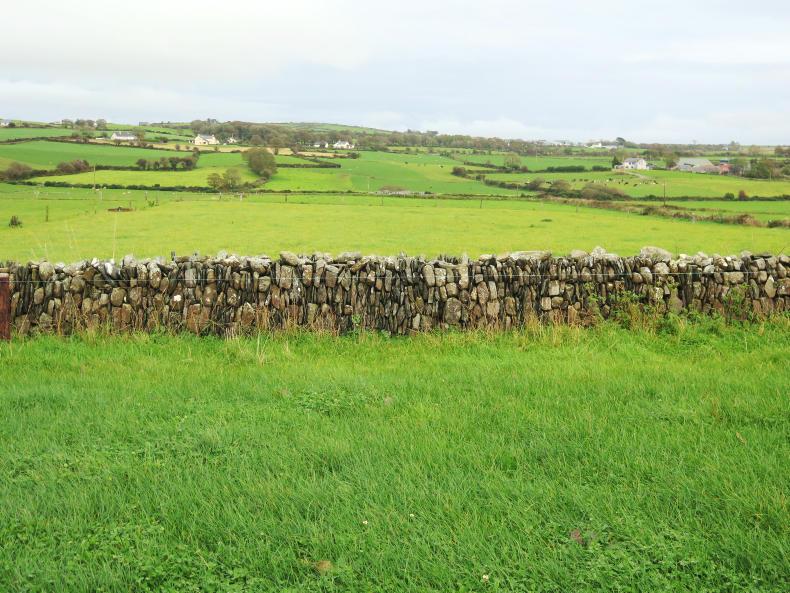
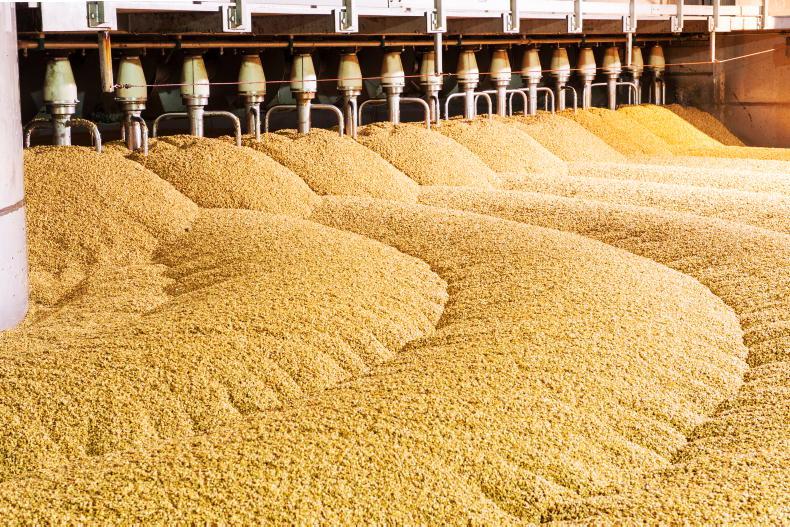

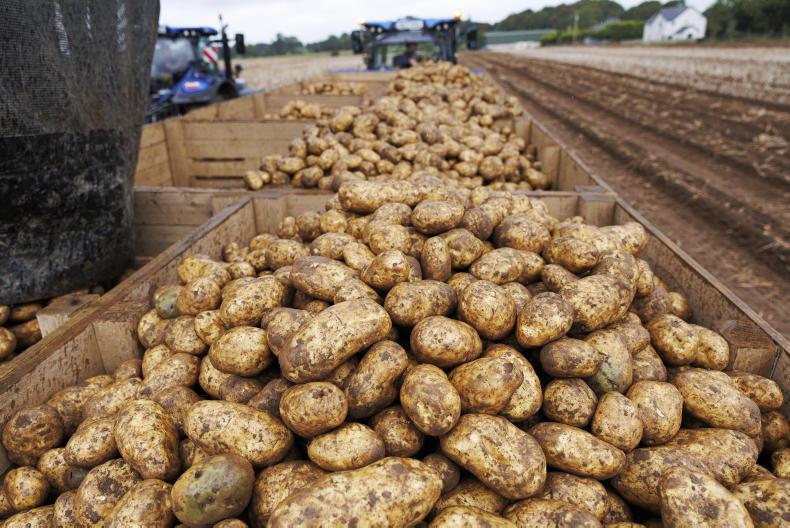
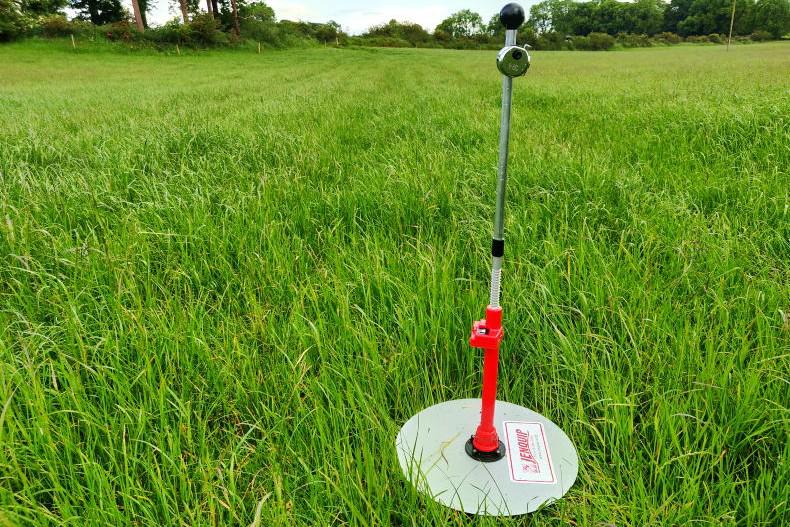
SHARING OPTIONS